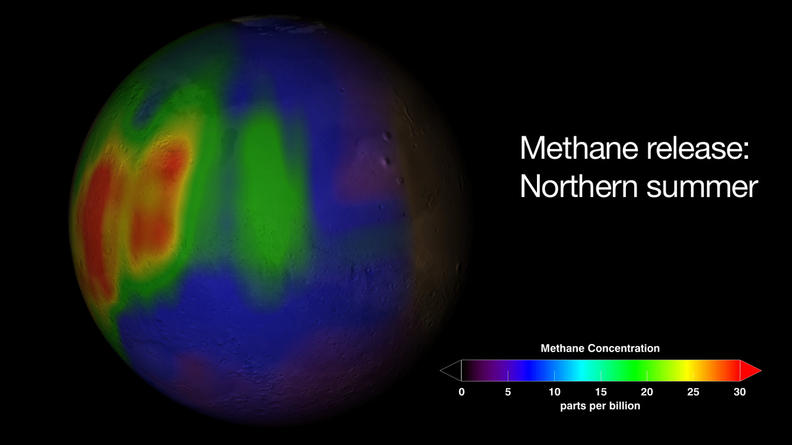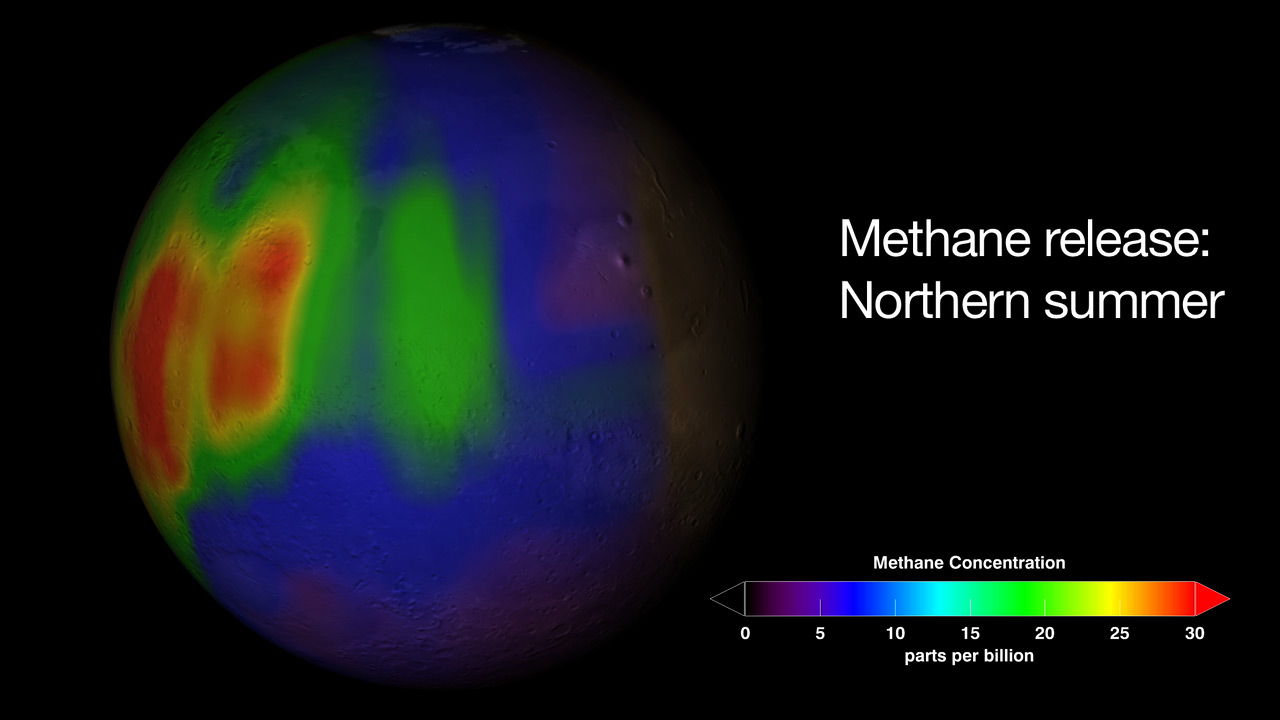Mars Methane Mystery

| Credit | NASA |
|---|---|
| Language |
|
A team of NASA and university scientists has achieved the first definitive detection of methane in the atmosphere of Mars. This discovery indicates the planet is either biologically or geologically active.
The team found methane in the Martian atmosphere by carefully observing the planet throughout several Mars years with NASA's Infrared Telescope Facility and the W.M. Keck telescope, both at Mauna Kea, Hawaii. The team used spectrometers on the telescopes to spread the light into its component colors, as a prism separates white light into a rainbow. The team detected three spectral features called absorption lines that together are a definitive signature of methane.
Methane, four atoms of hydrogen bound to a carbon atom, is the main component of natural gas on Earth. Astrobiologists are interested in these data because organisms release much of Earth's methane as they digest nutrients. However, other purely geological processes, like oxidation of iron, also release methane.
If microscopic Martian life is producing the methane, it likely resides far below the surface where it is warm enough for liquid water to exist. Liquid water is necessary for all known forms of life, as are energy sources and a supply of carbon.
It is possible a geologic process produced the Martian methane, either now or eons ago. On Earth, the conversion of iron oxide into the serpentine group of minerals creates methane, and on Mars this process could proceed using water, carbon dioxide and the planet's internal heat. Although there is no evidence of active volcanism on Mars today, ancient methane trapped in ice cages called clathrates might be released now.
According to the team, the plumes were seen over areas that show evidence of ancient ground ice or flowing water. Plumes appeared over the Martian northern hemisphere regions such as east of Arabia Terra, the Nili Fossae region, and the south-east quadrant of Syrtis Major, an ancient volcano about 745 miles across.

